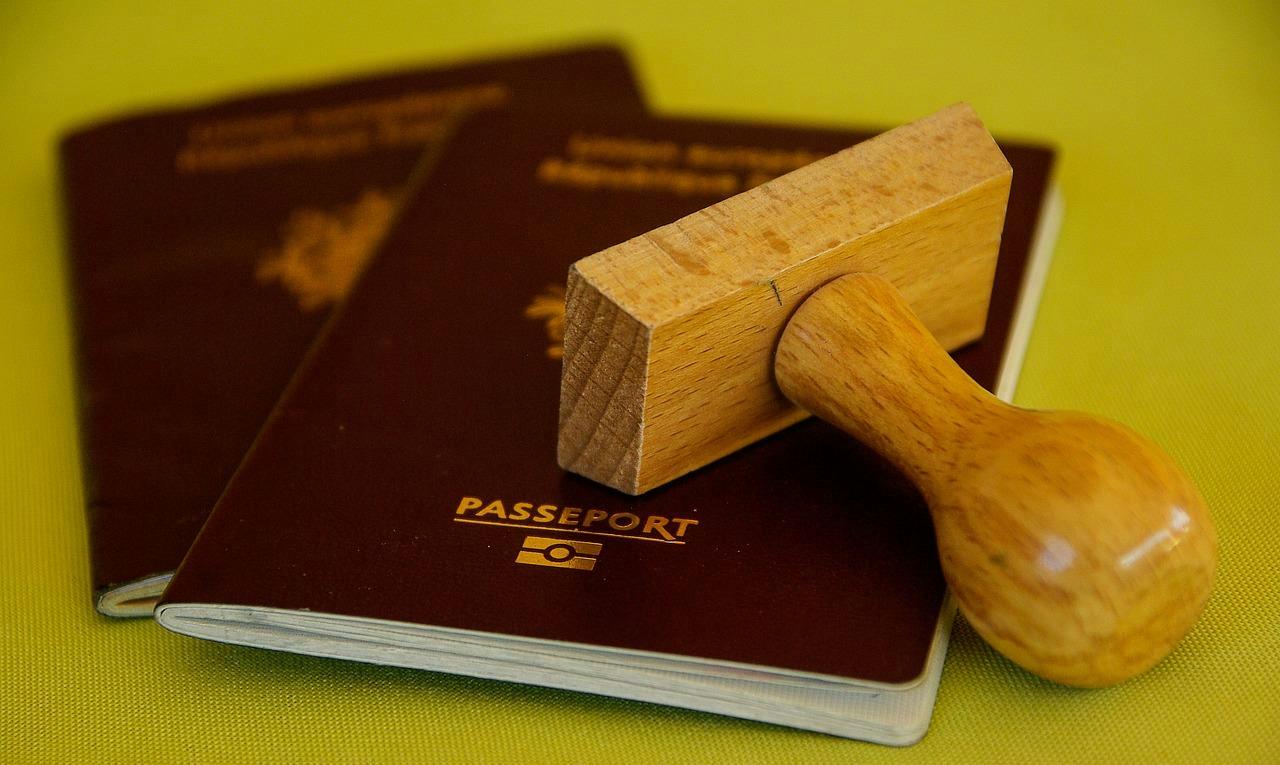Personalizing your travel accessories can make every journey feel a little more special, and leather passport covers are an ideal item for customization. Whether you're an avid traveler or enjoy crafting, painting leather passport covers allows you to express your creativity while making your gear stand out.
With the right tools and techniques, you can turn a simple passport cover into a personalized work of art that’s both durable and stylish. This guide will take you through the entire process of painting your own leather passport cover, from selecting the right materials to applying the finishing touches.

Choosing the Right Materials
Before you start painting, it’s important to gather the right materials. The quality of the paints and tools you use will directly impact the final result, so taking time to select the best options is crucial.
Types of Paints for Leather
Not all paints work well on leather, so it's important to choose paints that are specifically designed for leather projects. Acrylic leather paints are the most recommended option for painting leather because they adhere well to the surface, remain flexible after drying, and are available in a wide range of colors. Leather paints are durable and won’t crack or peel with regular use, which is essential for something like a passport cover that gets handled frequently.
Water-based acrylic paints are easy to use and provide a smooth finish, making them perfect for detailed designs. They also dry quickly, allowing you to build layers of color without having to wait long between applications.
Brushes and Other Tools
Choosing the right brushes is just as important as selecting the right paint. For painting intricate passport cover designs, fine-tipped brushes are ideal for detailed work, while broader brushes are better for covering larger areas. It’s also helpful to have a variety of brush sizes on hand to accommodate different aspects of your design.
Additionally, you’ll need some other tools, including:
- Leather deglazer: Helps prepare the leather by removing its finish, ensuring the paint adheres properly.
- Painter’s tape: Great for masking areas that you don’t want to paint.
- Cotton cloths or sponges: Useful for cleaning and applying products like deglazers or paint sealants.

Preparing the Leather Passport Cover
Proper preparation is key to ensuring that your paint adheres well to the leather and that your design lasts. Skipping this step can lead to poor results, such as paint peeling or cracking over time.
Cleaning and Deglazing
Begin by cleaning the surface of the leather passport cover. This step removes oils, dirt, or residues that might interfere with the paint. Use a lint-free cloth and a leather cleaner or rubbing alcohol to gently clean the leather. Make sure to wipe it down evenly and allow the surface to dry completely before proceeding.
Next, use a leather deglazer to remove any existing finish on the leather. This step is critical, as most leather goods have a protective coating that can prevent the paint from sticking. Apply the deglazer with a clean cloth, gently rubbing it over the areas where you plan to paint. The deglazing process ensures that the leather has a slightly rough texture, which allows the paint to adhere more effectively.

Designing Your Passport Cover
Planning your design ahead of time will help you achieve the best results. Whether you’re creating an abstract pattern or a detailed illustration, taking the time to sketch out your ideas will give you a clear direction before you start painting.
Freehand Drawing or Using Stencils
If you’re comfortable drawing directly onto the leather, you can freehand your design using a leather-safe pencil or marker. For more intricate designs or if you want to ensure precise lines, consider using stencils or transfer paper to map out your design. Stencils are great for repeating patterns or detailed shapes, while transfer paper allows you to trace more complex designs onto the leather.
Choosing Colors
When selecting colors, think about how your design will interact with the natural color of the leather. You can choose bold, contrasting colors to make your design pop or stick with muted tones for a more subtle effect. Keep in mind that leather often has a natural texture that can enhance the appearance of your design. For instance, lighter colors may reveal more of the leather’s grain, while darker colors can provide a more solid, uniform look.
Painting Techniques
Now that your passport cover is prepped and your design is in place, it’s time to start painting. Follow these steps to ensure a smooth and professional-looking finish.
Applying Paint
Begin by applying a base coat to establish an even surface for your design. Use a thin, even layer of paint, applying it with a broad brush. This base layer will also serve to lock in the color and create a smooth foundation for any additional layers of paint.
For more detailed areas, switch to a fine-tipped brush to carefully fill in intricate lines and shapes. Make sure to allow each layer of paint to dry before applying the next to prevent smudging or blending colors unintentionally.
Layering for Depth
One of the keys to achieving a professional finish is layering. Instead of applying a single thick coat of paint, build up color gradually by applying multiple thin layers. This approach helps avoid cracking or peeling and allows you to add depth to your design. If you want to add shading or highlights to your design, you can do so by gradually blending lighter or darker shades into your base color.
Allowing the Paint to Dry
Once your design is complete, let the paint dry thoroughly. It’s important to be patient at this stage to avoid smearing or damaging your work. Depending on the thickness of the paint layers and the type of paint used, this could take a few hours or overnight.
Finishing Touches
After the paint has dried, it’s essential to seal your design to protect it from wear and tear.
Applying a Sealant
Use a leather-specific sealant to protect your painted design. Sealants come in different finishes, including matte, satin, and gloss. Apply the sealant evenly across the painted areas using a soft brush or sponge. This protective layer helps ensure that your design remains vibrant and prevents the paint from cracking or peeling over time.
Let the sealant dry fully before using your passport cover to ensure the best results.
Maintenance and Care
To maintain the appearance of your painted leather passport cover, regular care is essential. Clean your passport cover periodically with a soft, dry cloth to remove dust and dirt. Avoid using harsh cleaners or alcohol-based products, as these can damage the paint or the leather itself.
If you notice the design starting to fade or wear down over time, touch it up by repainting the affected areas and reapplying the sealant.
Troubleshooting Common Issues
Even with the best preparation and care, you might encounter some issues while painting leather. Here are some common problems and how to fix them:
- Cracking Paint: If your paint starts to crack, it’s likely because the layers were applied too thickly. To fix this, gently sand down the cracked area with fine-grit sandpaper, then reapply thinner layers of paint.
- Uneven Application: Uneven paint application can occur if the leather wasn’t properly cleaned or deglazed. If you notice this issue, clean the surface again, and then carefully repaint the affected areas.
- Paint Peeling: Peeling can happen if the paint didn’t adhere well due to insufficient deglazing. Sand the area, clean it, and reapply a fresh layer of paint followed by a sealant.

Customizing your own leather passport cover through painting is a rewarding and creative DIY project that allows you to add a personal touch to your travel accessories. Whether you’re aiming for simple designs or intricate patterns, following these steps ensures that your project will turn out beautifully and stand the test of time.
By choosing the right materials, carefully prepping the leather, and applying multiple layers of paint and sealant, you can create a durable and unique passport cover that reflects your personality. For high-quality leather paints, check out brands like Angelus Direct, known for their specialized products.
FAQs
1. What type of paint should I use for leather passport covers?
Acrylic leather paints are the best choice, as they adhere well to leather, remain flexible, and offer a range of vibrant colors. Brands like Angelus Direct are known for their quality leather paints.
2. How can I make sure the paint doesn’t crack or peel?
To prevent cracking or peeling, apply thin layers of paint and allow each layer to dry fully before applying the next. Always finish with a leather-specific sealant to protect your design.
3. Is it difficult to paint intricate designs on leather?
No, with the right tools such as fine-tipped brushes and stencils, it’s possible to achieve detailed and intricate designs even if you’re a beginner.
4. How do I prepare leather for painting?
Proper preparation is essential for ensuring paint adheres well to the leather. Start by cleaning the surface with a mild leather cleaner or rubbing alcohol to remove any dirt or oils. Follow this by using a leather deglazer to strip away any finish that might interfere with the paint’s adhesion. Prepping the leather creates a slightly rough texture that helps the paint bond better with the surface.
5. Can I paint over existing designs on my leather passport cover?
Yes, you can paint over existing designs, but it’s important to properly prepare the leather first. Clean the surface and use a deglazer to remove the old finish and any previous paint. This will ensure the new paint adheres well and provides a smooth, even finish. Applying thin, even layers of paint will help to cover the old design effectively.

